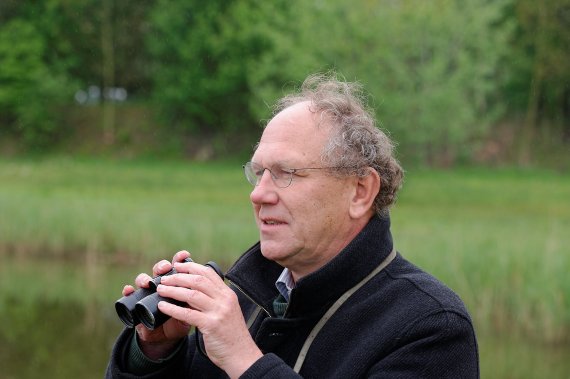Frank Berendse in 2010. The professor, who is now retiring, wants areas to be designated where nature takes priority.
On your retirement last week, you were appointed Officer in the Order of Orange-Nassau. A surprise?
‘Yes, absolutely. I looked to see who else had got this and the list includes Jac. P. Thijsse, the founder of nature conservation in the Netherlands. I’m very proud of this.’
In your farewell lecture, you compare the dynamism of nature with the inertia of nature policy. Are we too attached to the status quo?
‘In terms of botany, the Netherlands looks completely different now to the 1970s, when I started to look at wild plants. On the one hand there are the changes in the landscape due to demographic and economic developments, while on the other hand you have the dynamism of the species and the constant shifts in their habitats. These are the result of climate change but numerous other changes can also cause a species to spread or decline. We sometimes get obsessive in our efforts to conserve certain species, but we will have to accept that things can change. Wild plants and animals go and live where they want.’
Does that mean we should do nothing?
‘Not at all! We should make sure that there are the right preconditions for nature. Most important of all is that the area should be big enough. There are many places in the Netherlands where nature and agriculture are found in very close proximity. That is why I am advocating a system of Regional Nature Networks. In these RNNs, nature should not be subjected to the negative effects of farming caused by water management, fertilization and pesticides. The money for agricultural nature management should be concentrated in those areas. You can also invest there in organic farming and small-scale recreation. Then you can have other areas that are dedicated to agriculture.’
How big should such a Regional Nature Network be?
‘Big enough to keep at bay the negative effects of farming outside the network. I’m thinking in the order of 100 to 200 square kilometres.’
What does that mean for the Netherlands?
‘The great biologist Edward Wilson, the man who came up with the concept of biodiversity, calculates in Half Earth, the book he recently published, that half the planet needs to remain undamaged for 80 percent of all species to have a future. That is a thought that we can’t dismiss as naive. The essential question is: how many square kilometres are needed to give the various kinds of nature in this country a genuine future? In Wageningen we should be doing everything we can to answer that question.’

